Rock Elm
Time, Stasis, and Storms
At this moment, as wet robin fledglings fatten on ripe mulberry sugar between warm summer showers, I can think of no better feeling than transplanting trees just before a soil-quenching rain. The scene almost reeks of fecund summer, except for the dark wall of clouds on the horizon. Of course, for all my attempts at meeting the professional requirements of a writer, to reflect the complications of our world with my own depth, complexity, and nuance, I’ve got to admit that most of the time I’m something of a simpleton. Watching the rain pour, seeing the high grass billow, the pollen smoking from the flowering stalks as moisture seeps to the hairs of roots, pocked in tick bites and coated in grimy bits of wet earth and grass anther, I bray like a jackass while the water slides down pores in the soil, a balm for the sullen frogs, displaced roots of trees and reaching radicles of squash. I have worked through the heat and flies and brimstone air of distant wildfire, toiling in preparation for this precise moment –the renewing of the bond between root and earth– and in spite of the unlikely event that this world will be any better for it, I feel some simple, stupid joy among the wet birds, smoke plumes, and rising petrichor.
It will all fade as the soil inevitably dries. In spite of a perfectly timed rain for transplanting, this particular tree planting project is perhaps a little doomed. Rock elm (Ulmus tomasii) is an underappreciated plant, and like all of our native North American elms, prone to Dutch elm disease. Rock elms once grew to live for two or three centuries– these may not. While rock elm is native to our part of Missouri, it is hard to say how abundant it ever was. Terrestrial plant inventories of our county noted a few pockets of specimens as recently as the 1990’s, but I have never found one in person. Using seeds from the USDA’s germplasm inventory, we are making an unlikely attempt to re-root it on the landscape. It feels almost reflexive to me to plant a tree that’s “supposed” to be here, yet is absent. A small, simple, response to a problem that is beyond my comprehension, beyond my ability to meaningfully address.
Rock elm was a component of a diverse landscape, a landscape now notable for absence, excepting small pockets that could not be reached by the plow. It is the hardest and heaviest of elms, once prized as durable wood for the shipbuilding, furniture, and the agricultural implements that helped to drive it from these fields. While I stand smug at the moment, smiling tired as the rain pelts the earth, these reintroduced seedlings, small and slow-growing, will have to endure disease, predation by an unchecked deer population (if not careless humans), a shifting climate, and the further collapse of biotic life. If they manage to escape this all, they might stand proud on the landscape, filling the void left by mule-drawn plows, stump-grinders, and complete extraction for short-term gain. Its flowers are subtle, its leaves typical, and it has a grain so twisted and difficult to split that elms are hardly even valued as firewood around here anymore, let alone the hardest elm on the planet. While I’m not solely planting them to be contrary, I have to acknowledge that I find it a relatable tree.
I’m unclear if it’s profound to plant a tree on a burning planet anymore, or work as hard as we know how to restore a mere 98 acres of tallgrass prairie in the face of total biological collapse, or attempt to feed my neighbors by practicing some gentler form of agriculture within a culture that is incapable of ceasing its omnicidal tendency to kill and starve others and itself. But while the rain falls in steady drops, tickling the full green leaves of Osage orange where birds chortle in anticipation of wriggling worms and buzzing gnats, I am plenty capable of remaining calm, satisfied, and complicit in my own actions and inactions. As a wall of thunder builds and rises to our southwest, coiled with Canadian smoke like serpentine fornication, I do nothing, content to have planted these small, green elms.
There was a time when the late May / early June storms ushered in a time of great activity for me. I have been caught in many thunderstorms sowing corn and beans with an antler dibble. Nowadays, if I get wet underpants, I go home. Our little earthen hovel, our home of timber and straw stinks with last year’s rotting squash that I couldn’t eat or sell. Why plant more in a world dead-set on its own suicide? A world waiting on salvation, where anything can happen, so long as it’s an atrocity.
When white settlers arrived in Northeast Missouri, they found themselves amidst a fearfully complex ecological network that they could not understand. The diversity of the landscape –wolves, elk, and bison (now extirpated), swarms of biting insects (alive and well), tangles of razor-wire thorns, rising floodwaters, and the awesome thunder of prairie fire– was likely strange and terrifying. Covered with welts and bites and penetrated by thorns as I currently am, I can personally attest to the fearful position of being alone in the wilds of the prairie. We may appear quaint and soft from an airliner, but dwelling upon this earth is different. If you’re from outside the prairie, you may think of it as a homogenous sea of grass, but crouching deeper in it, alongside the ticks and chiggers, running your hands along the accumulation of glacial till, feeling the heat and hearing the thunder, we are forced to face our weakness, simplicity, and insignificance in the context of larger, diverse cycles. This is why it all had to be plowed out and planted to corn, why the rock elm had to be felled, and why the crumbling brick of main street is cleared for the soft, bright safety of another Dollar General. The diversity was a threat– and so we extirpated it.
In spite of their impact and ignorance, I’ve always had a grudging respect for midwestern settlers –those families that traveled a little bit, maybe making it just across the Mississippi, then feeling satisfied enough to stay put, lacking the ambition of that cruel and conquering vanguard of prospectors and mountain men who invaded the mountain west. Most of us here are the descendants of simple folk, satisfied enough with good dirt and a tolerable climate, if only we knew how to sustain these things. I’d appreciate the comfort of a world that never changes, if that were to really exist, an island in the tumult that chooses gradual death over radical transformation. Of course, that world is perhaps less real than it seems. By planting rock elm, I suppose I’m participating in this illusion myself. But the crackle of wind between popple leaves that violently slap in the face of a darkening anvil of sky shatter this dream.
In the interludes between rain, the flies shake their wet wings dry and ascend, devoured by barn swallows that skate through the high wind, or swatted by annoyed cows. Raindrops pitter-patter through the breezy canopy, blown about by cool gusts that traverse the hot, smoky air, and leagues of little sparrows flutter onto the mulberry branches, laden with bloody fruit. I don’t know if sparrows feel simple, stupid joy when they eat the fruits, but they sure seem motivated to do so. One tree in particular– a rare specimen of Morus rubra that seems unspoiled by colonial Morus alba pollen (more on this here in this old tome), is really bringing the chipping sparrow in during the calm moments. They chatter their staccato cries whenever I approach for my share of the sanguine treacle, fleeing to the pyre of autumn olive and red cedar I’ve arranged as a good old Missouri burn pile.
I have left much of my garden unplanted this year– the excitement of seed catalogs in mid-winter never manifested. We won’t starve. But now in the break between storms, I am seized with a sudden urge to plant the fallow places. This will only guarantee me increased work later– labor that often feels meaningless anymore, but still, I am concerned with the absence of plants. Shuffling through the disorganized stacks of seed envelopes, I come across a handful of native legumes –purple prairie clover and Illinois bundleflower– that don’t need stratification to sprout. I quickly work to scratch them into the soil surface of some of the abandoned beds, and work a generous amount of buckwheat into the places where I might try a fall crop, should my ambition remain intact by then.
And as my fallow garden fades into prairie forbs, and the roots of rock elm grip into the wet earth, I try to picture Northeast Missouri fifty years from now, when the Dollar Generals have all blown over or burnt up, gone the way of mammoths and mainstreet rubble, the whole momentum of manifest destiny disrupted, changed course like the once-untamed Mississippi, leaving settlements flooded and annihilated in the tumult, sediment piled and deposited, levees torn. Then, with the long absence revoked, maybe rock elm will sprout and spread. I don’t know, but damn, these mulberries are good.
The midwest is changing– perhaps slower than the rest of this country, but changing nonetheless. As the dairy industry vanishes, the silos crumble. As meth and fentanyl creep into our blood, the deep, sweet kindness of our static communities fades like crumbling veneer on our decrepit squares. While we are familiar with damaging, violent weather, we now face challenges similar to the dustbowl era, our crops merely propped up by the latest chemo-mechanical technology that can be leased to us by the very corporations that destroyed the soil we continue to extract, per our contractual obligations and servitude to the dominant economic system. The deep reach of tall grass roots has been turned asunder, the beaverless creeks run dry –what stagnating pools remain are poisoned with phosphoric run-off– the great, big community potluck is now absent of a single crumb. But unlike other rural agrarian communities throughout the world that suffer under the boot of extraction capitalism, we are the ones who undermine the earthly foundation that supports our own community.
Sometimes, when the big storms blow in on us here, it almost seems that the world around us recognizes the coming violence of wind and hail before any human can. The goats crowd the crowns of their pasture, the dogs tuck their tails and squint their eyes shut, the flies alight on the undersides of verdant leaves that seem to curl in anticipation of heavy rain, and just before the war of fronts breaks above us, the twigs and limbs of wise old elms limber up in order to roll through the tempest.
I was in a Mennonite bent and dent grocery store –not a Dollar General– when the warring wind broke loose and large hail spilled from the coal-black clouds, the limbs of poplar and maple crackling like lighting caught up in a thunderhead, finally breaking and tumbling through the ditches. I was thinking about how few fireflies –I grew up calling them lightning bugs– seemed to be drifting through the long, slow evenings anymore. The violence of the storm was swift and un-direccted– not at all like the violence of human beings. Everybody in the store spent approximately 3-5 minutes staring out into the apocalypse outside, and then resumed loading their carts with expired lasagna and bulging cans of carrots. The midwest may be changing, but we still all embody a fatalistic nonchalance in the face of frightening weather
Most of the time, a summer storm in Northeast Missouri is followed up with a broad blue horizon, and maybe even a rainbow. I like rainbows… they’re fine. This most recent storm took a different track, and the sky just darkened gradually. Heading up the road home, stormwater running on the road shoulder in rivulets overflowing their tiny banks, I met a weary traveler– a good-sized snapping turtle, clawing a trail uphill through deposits of storm-torn silt.
Now, it is suspected by scientists that snapping turtles can orient themselves magnetically. They are fine orienteers. There used to be a big ol’ snapper around here, not the biggest, but a good-size critter nonetheless. Every year, this muddy, hissing beast (yes, they hiss) would slowly ambulate between two small ponds, guided by some biological GPS system, unimpeded, until a new structure was erected in his regular pathway– the one he’d undoubtedly traversed for decades. Confused, frustrated, and crusted with pond-scum, he paused blank-eyed at the wall, until someone inevitably picked him up and set him on his way– a small indignity for such an ancient witness. This activity continued for three or four years, before the old beast was swept into an electric fence during a flash-flood. Sadly, that was the end of our old reptilian patriarch. I wonder if he ever saw any rock elm on his slow journeys.
As this younger –perhaps even spritelier– snapper made it’s sisyphean course uphill to the old duckweed pond, the low hanging rainclouds blocked any blue sky along the horizon. The thatch along the ditch lay festooned with windfall mulberries, and the little sparrows chipped and bloodied their beaks and bathed in the muddy puddles along the road. A strange stillness hung down from the heavens, purple prairie clover seed plumped in its embrace of earth, and mere twigs of rock elm grew along the thorny draw for the first time in many, many years.


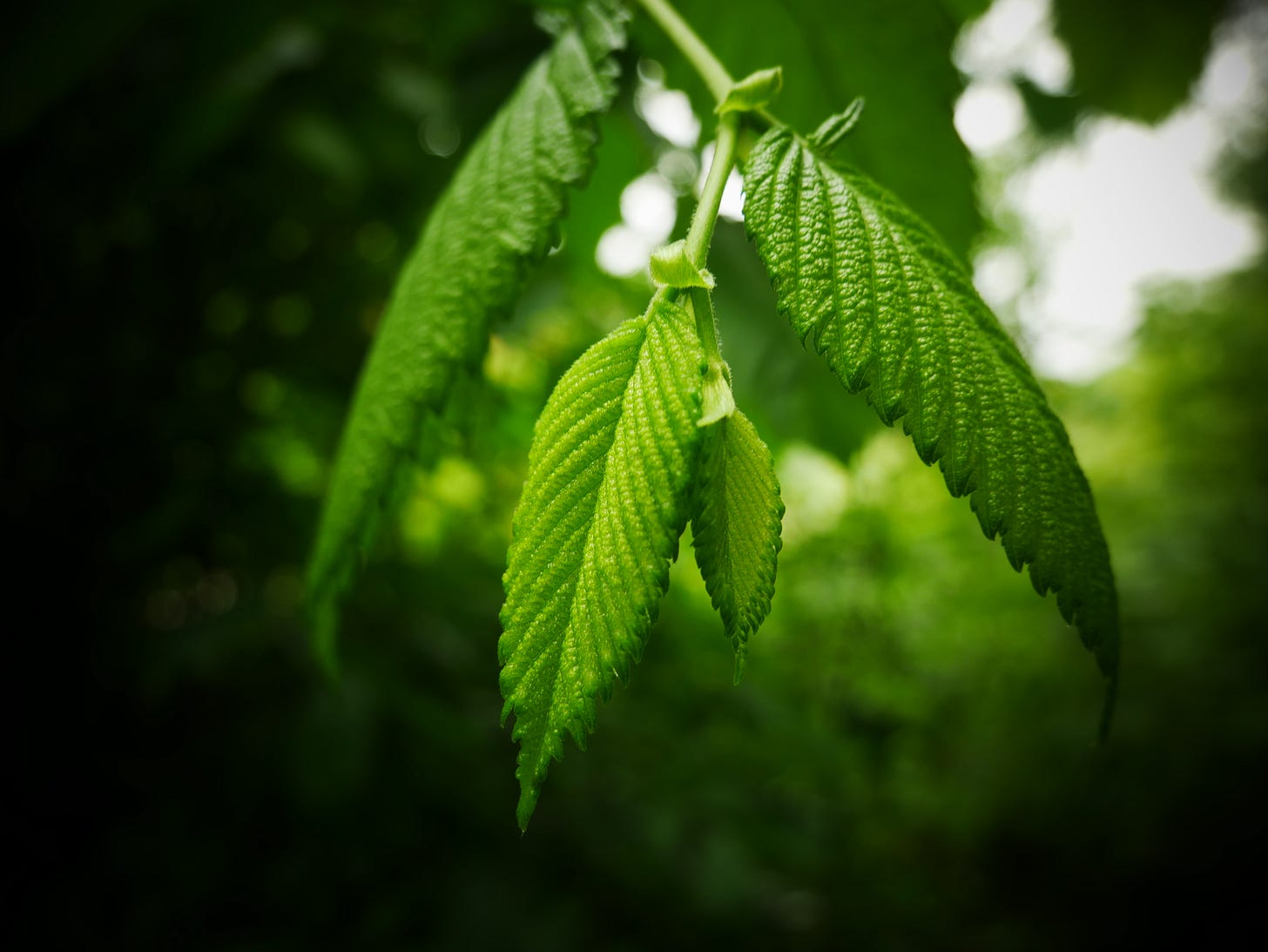
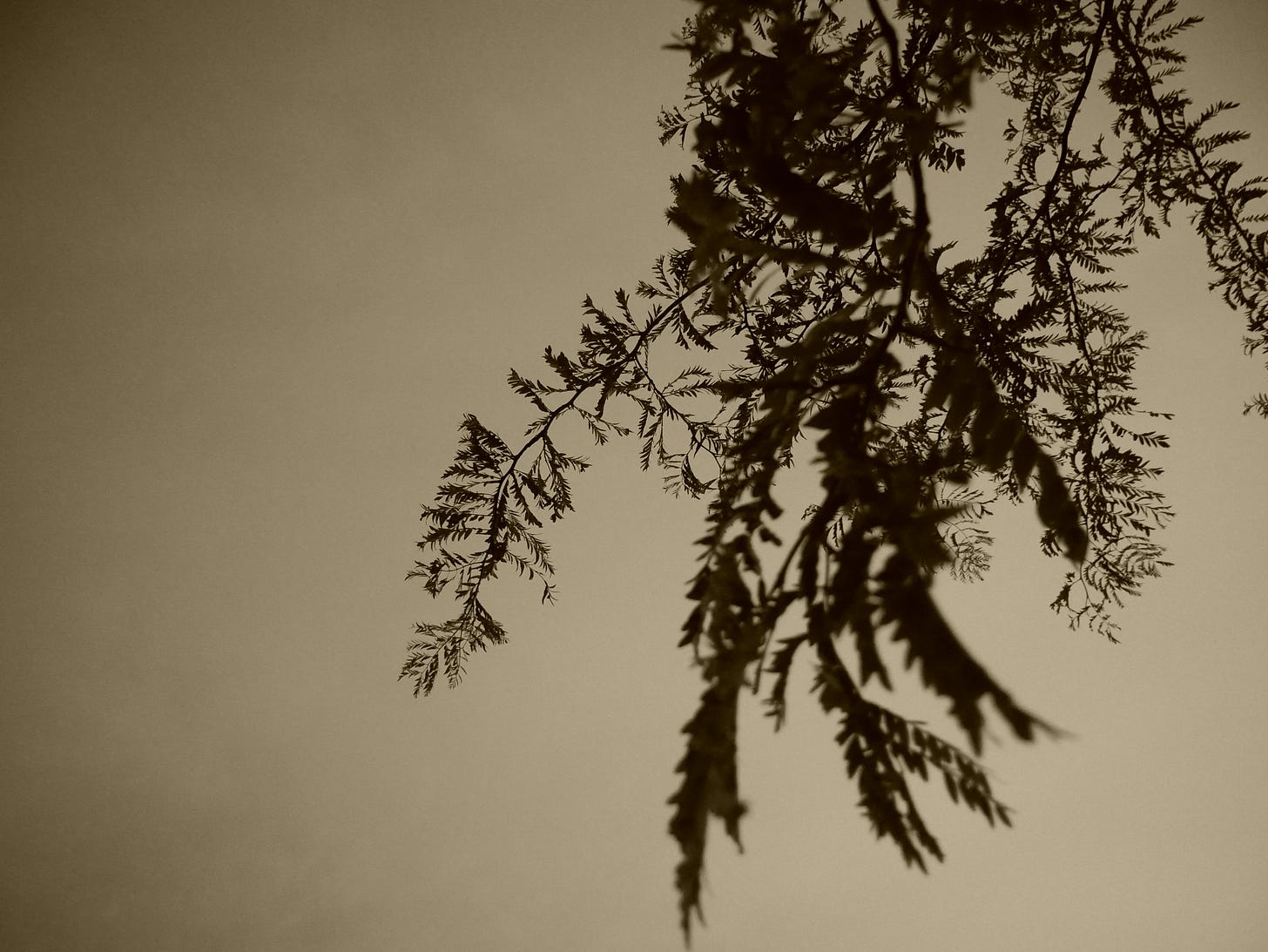
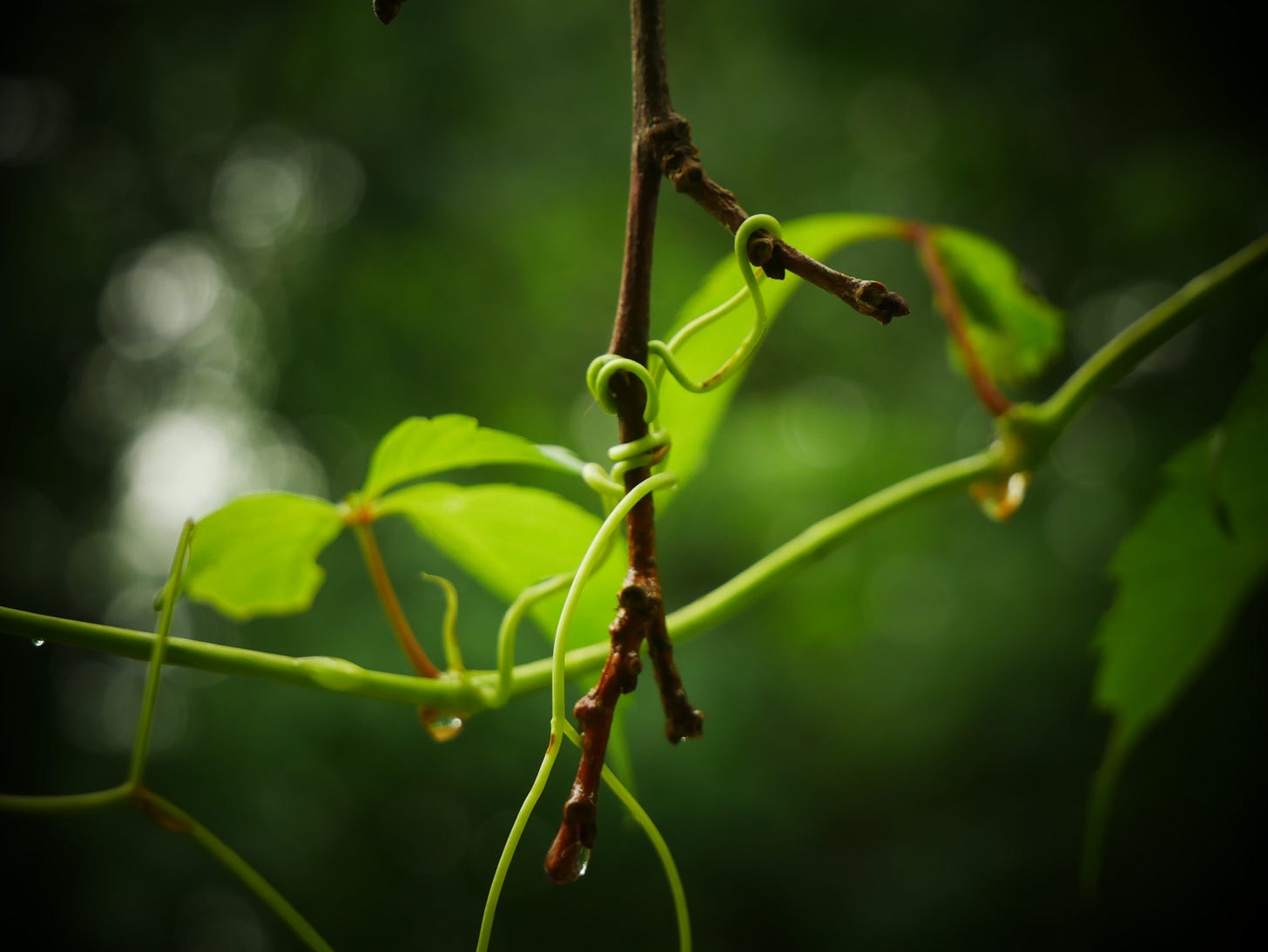
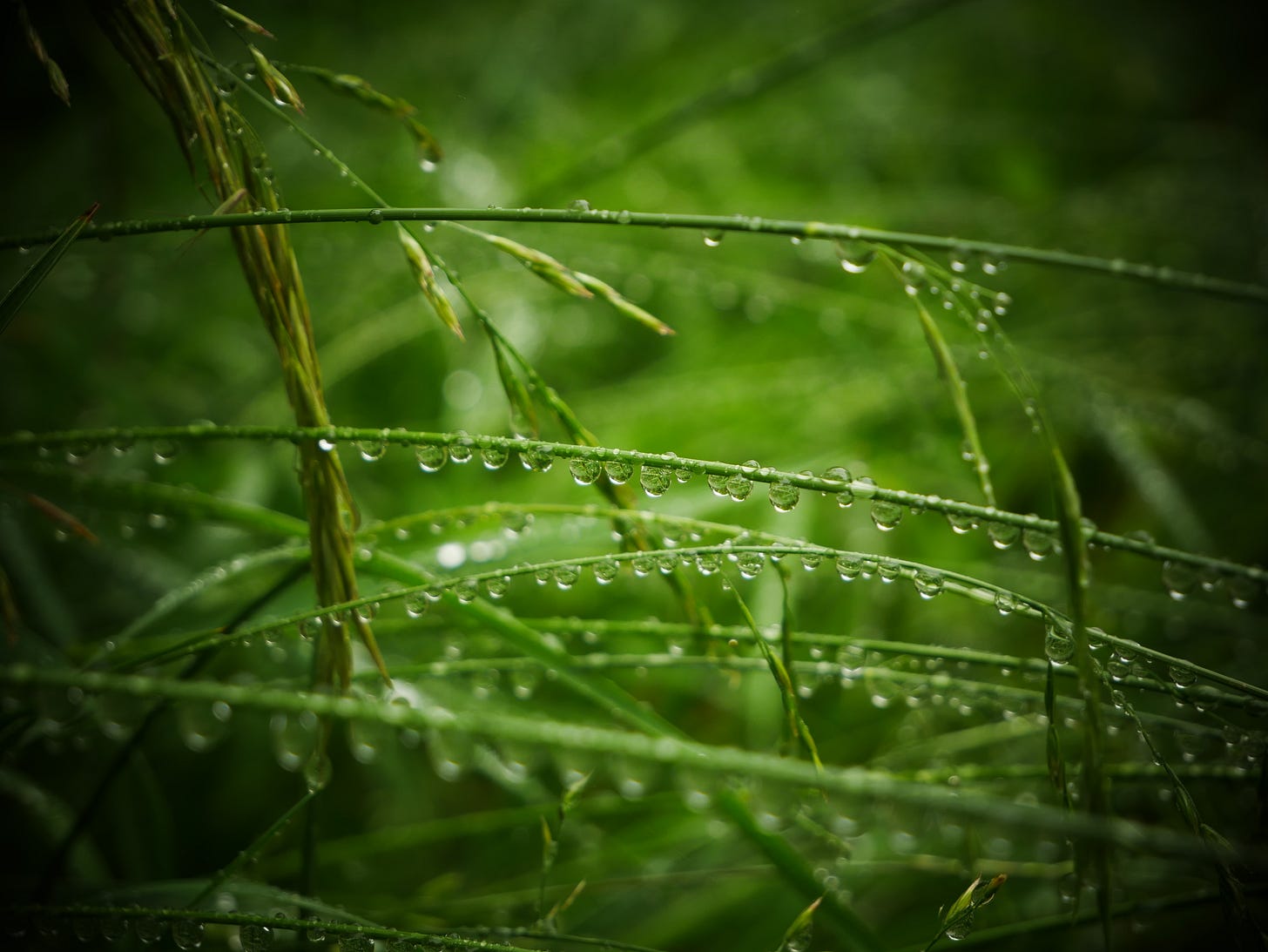
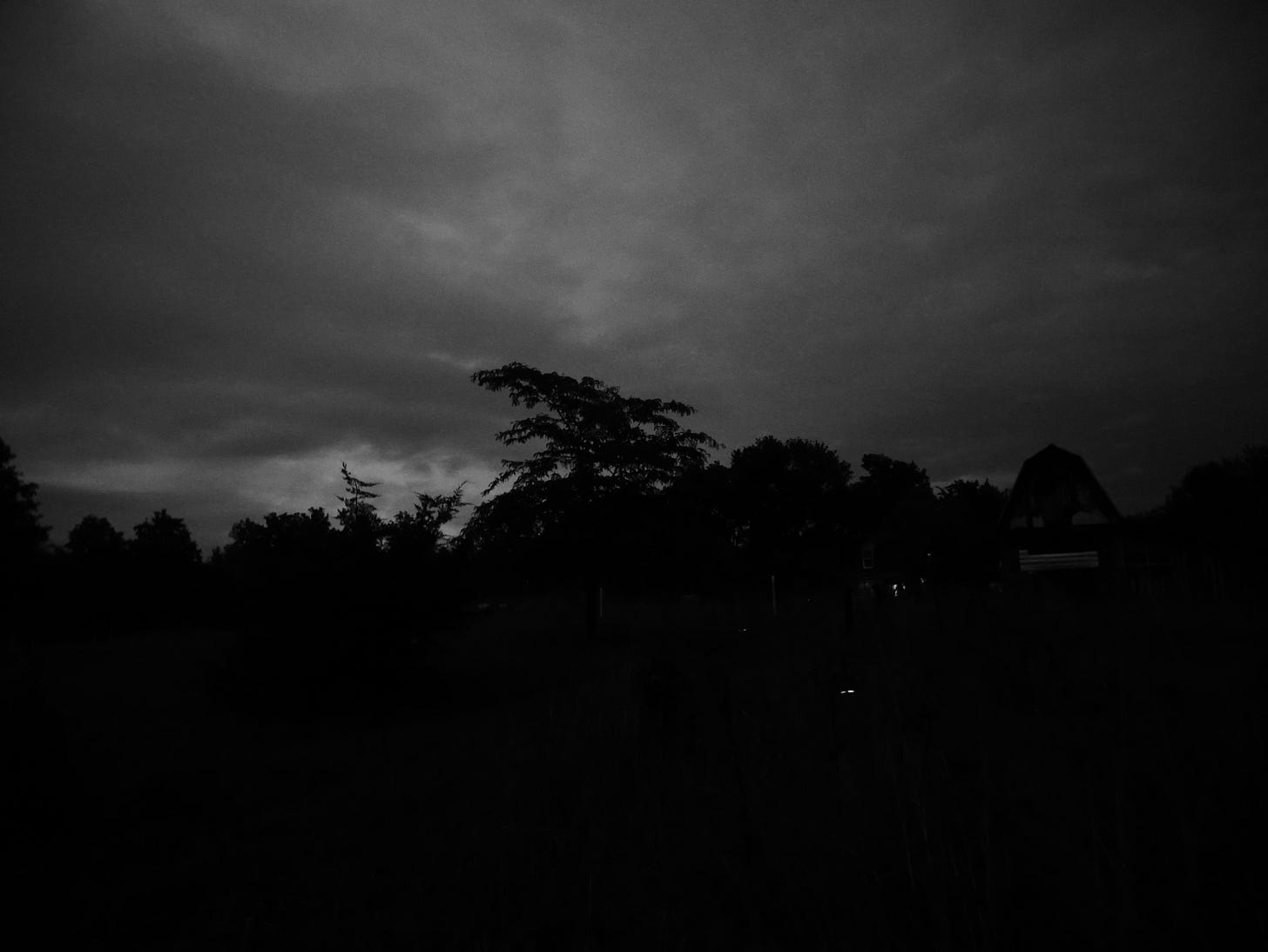
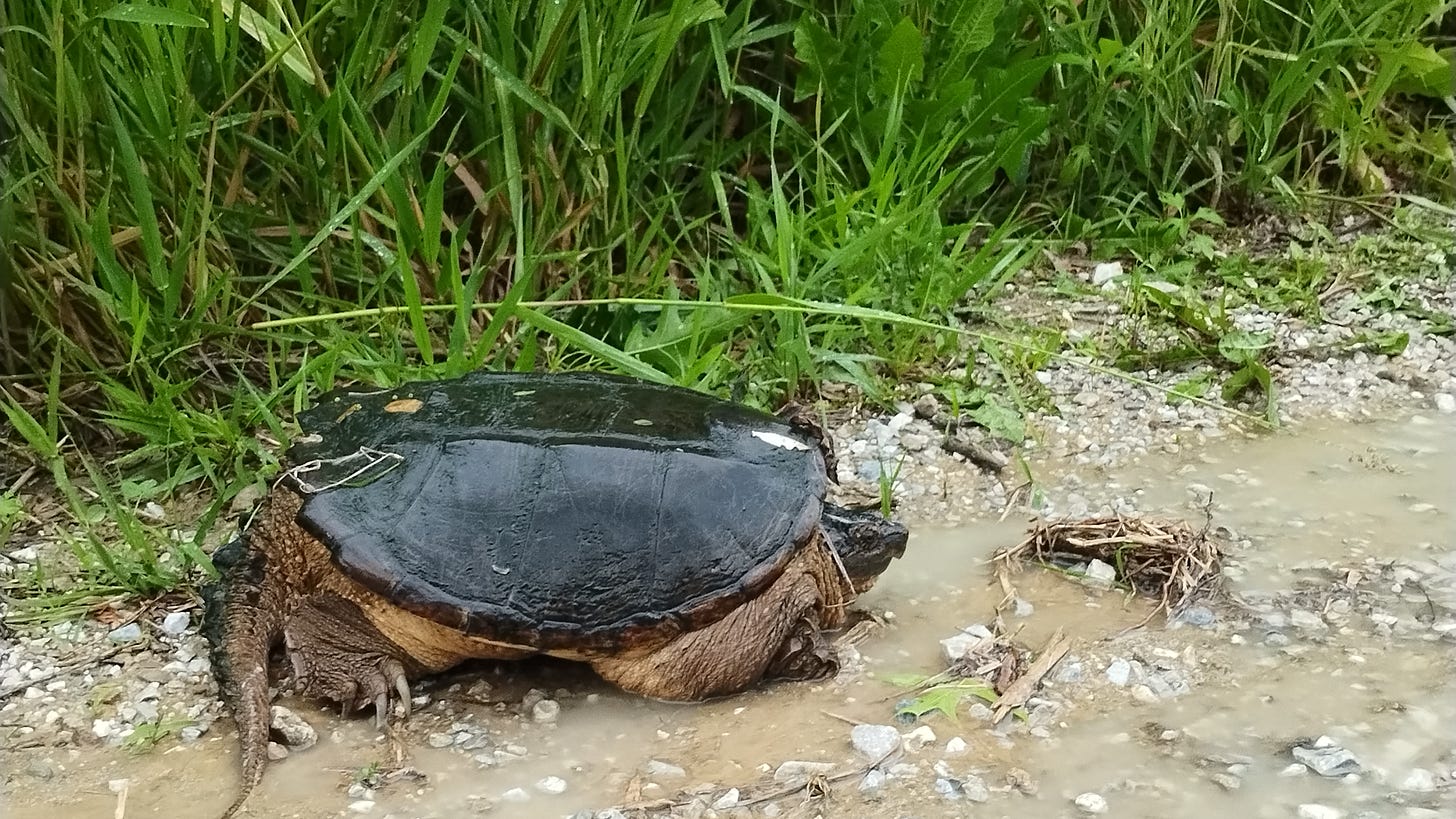
When it all feels this heavy, I try to remind myself I'm still blessed to live in a world with Illinois bundleflower.
Wow. Just wow.